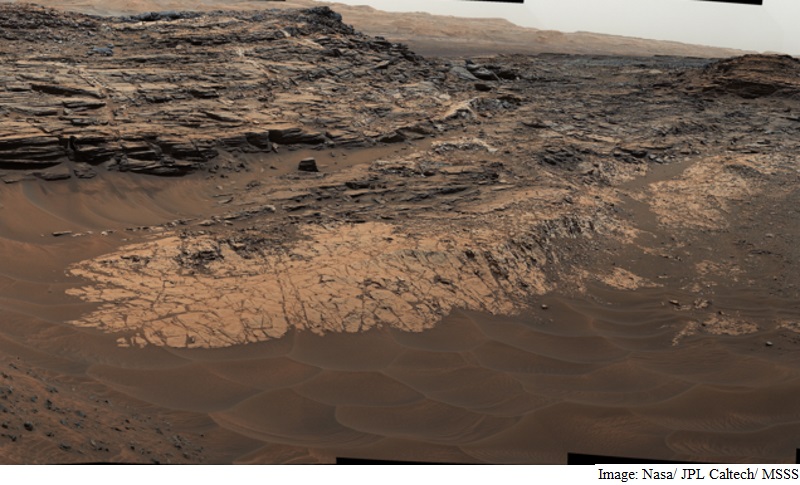
Nasa’s Mars rover Curiosity has found mysterious rocks rich in silica – a rock-forming chemical combining the elements silicon and oxygen and commonly seen on Earth as quartz.
Curiosity spotted much higher concentrations of silica at some sites it has investigated in the past seven months than anywhere else it has visited since landing on Mars 40 months ago.
“These high-silica compositions are a puzzle. You can boost the concentration of silica either by leaching away other ingredients while leaving the silica behind, or by bringing in silica from somewhere else,” explained Albert Yen, Curiosity science team member at Nasa’s Jet Propulsion Laboratory in California.
“Either of those processes involve water. If we can determine which happened, we’ll learn more about other conditions in those ancient wet environments,” he added.
Water that is acidic would tend to carry other ingredients away and leave silica behind.
Alkaline or neutral water could bring in dissolved silica that would be deposited from the solution.
Adding to the puzzle, some silica at one rock Curiosity drilled, called “Buckskin,” is in a mineral named tridymite, rare on Earth and never seen before on Mars.
The usual origin of tridymite on Earth involves high temperatures in igneous or metamorphic rocks, but the finely layered sedimentary rocks examined by Curiosity have been interpreted as lakebed deposits.
Tridymite found at Buckskin may be evidence for magmatic evolution on Mars.
Curiosity has been studying geological layers of Mount Sharp, going uphill, since 2014, after two years of productive work on the plains surrounding the mountain.
The mission delivered evidence in its first year that lakes in the area billions of years ago offered favourable conditions for life, if microbes ever lived on Mars.
The mission is now investigating how ancient environmental conditions evolved from lakes, rivers and deltas to the harsh aridity of today’s Mars.
“What we are seeing on Mount Sharp is dramatically different from what we saw in the first two years of the mission,” noted Curiosity project scientist Ashwin Vasavada of JPL.
“There’s so much variability within relatively short distances. The silica is one indicator of how the chemistry changed. It’s such a multifaceted and curious discovery, we’re going to take a while figuring it out,” he added.
[“source-gadgets.ndtv”]




